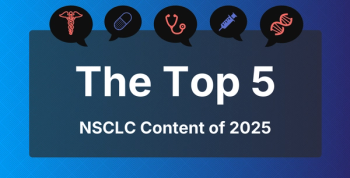
Immune Cell Phenotypes Linked With Hypothyroidism, IPF
Key Takeaways
- Hypothyroidism is a significant risk factor for IPF, with a higher prevalence in IPF patients compared to the general population.
- Mendelian randomization confirmed the association between hypothyroidism and increased IPF risk, identifying 36 immune cell phenotypes linked to IPF.
Thirty-six immune cell phenotypes were flagged as having an association with idiopathic pulmonary fibrosis (IPF).
Hypothyroidism is a significant risk factor for the development of idiopathic
The findings offer potential insights into the role of hypothyroidism not only in IPF but also in chronic fibrosis in general. The study was
Corresponding author Liang Li, PhD, of the Gansu Provincial Maternity and Childcare Hospital, in China, explained along with colleagues that hypothyroidism has already been flagged as
In the new study, the investigators wanted to validate earlier research finding that hypothyroidism is a risk factor for IPF and also find out whether certain immune cell phenotypes mediate that causal relationship.
The investigators used Mendelian randomization to examine the influence of hypothyroidism on IPF and to investigate the mediating role of 731 distinct immune cell phenotypes. The analysis found that people with hypothyroidism were at a heightened risk of developing IPF (OR, 1.13; 95% CI, 1.06-1.21, P = 1.34 × 10−4). This did not come as a surprise, Li and colleagues said, as previous research has yielded similar results.
Next, the authors focused on immune cell phenotypes associated with IPF, identifying a total of 36 phenotypes. This represents a higher number of phenotypes than an earlier
Nonetheless, the findings still showed that these IPF phenotypes had a significant association with hypothyroidism, Li and colleagues said.1
The authors said a mediation analysis suggested that CD19 on IgD-CD27 cells accounted for 3.68% of the effect of hypothyroidism on IPF, and herpesvirus entry mediator on T cells accounted for 3.83% of the effect.
“Our findings suggested that hypothyroidism contributes to IPF pathogenesis through immune dysregulation, clarifying the causal link between hypothyroidism and IPF,” they wrote.
They said hypothyroidism increases the levels of key immune cells, thereby enhancing their profibrotic effects on IPF. Still, the investigators acknowledged that the contributions of the specific immune cell phenotypes they identified were modest.
“These subtle effects imply limited direct mediation of IPF risk through these immune mechanisms alone, potentially reflecting minor contributions within broader disease pathways,” Li and colleagues wrote. “It is important to assess the clinical relevance of these findings in conjunction with supplementary epidemiological and biological evidence.”
They said one important step in validating their results will be to replicate the findings in more diverse data sets. They noted that most of the genome-wide association study data they used were based on patients of European descent.
They added that their methodology, in which genome-wide association studies were used, limits their ability to look at individual-level factors, such as patient age. They said larger clinical trials will help confirm their results.
References
1. Liu Z, Kou C, Chen X, et al. Role of immune cells in mediating the effect of hypothyroidism on idiopathic pulmonary fibrosis. Clin Respir J. 2025;19(7):e70111. doi:10.1111/crj.70111
2. Bano A, Chaker L, Muka T, et al. Thyroid function and the risk of fibrosis of the liver, heart, and lung in humans: a systematic review and meta-analysis. Thyroid. 2020;30(6):806-820. doi:10.1089/thy.2019.0572
3. Oldham JM, Collard HR. Comorbid conditions in idiopathic pulmonary fibrosis: recognition and management. Front Med (Lausanne). 2017;4:123. doi:10.3389/fmed.2017.00123
4. He Z, Wang R, Song C, et al. Exploring the causal relationship between immune cells and idiopathic pulmonary fibrosis: a bi-directional Mendelian randomization study. BMC Pulm Med. 2024;24(1):145. doi:10.1186/s12890-024-02942-w
Newsletter
Stay ahead of policy, cost, and value—subscribe to AJMC for expert insights at the intersection of clinical care and health economics.






































